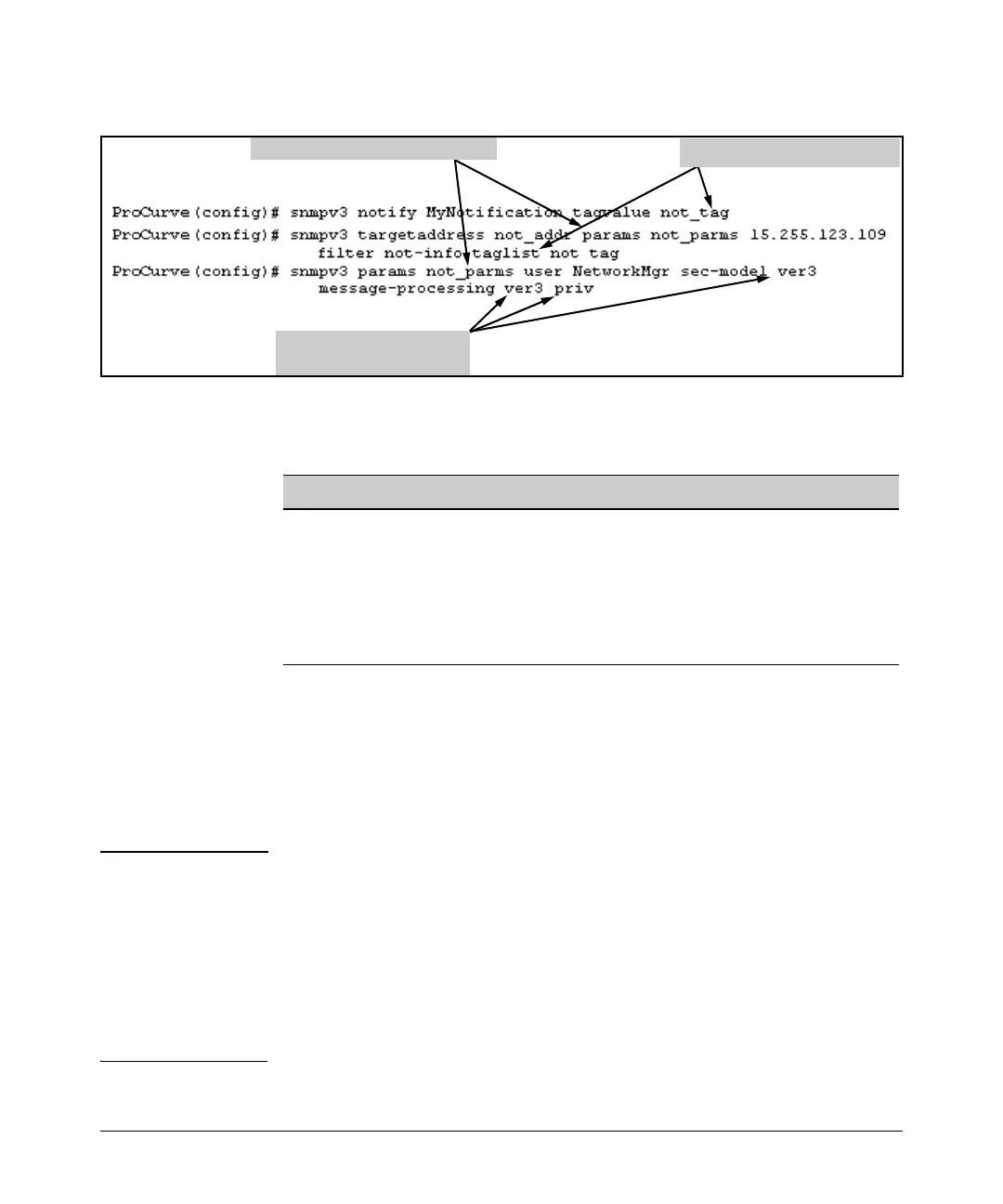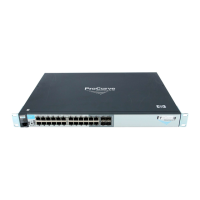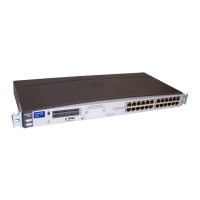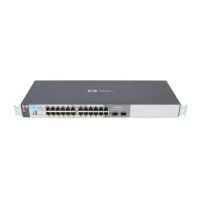Configuring for Network Management Applications
Using SNMP Tools To Manage the Switch
Tag value matches taglist value.
params value matches params name.
ver3 means you must select
a security service level.
Figure 14-8. Example of SNMP Notification and Trap Configuration
SNMPv1 and SNMPv2c Trap Features
Feature Default Menu CLI Web
snmp-server host (<trap> receiver) public — page —
14-21
snmp-server enable (traps authentication) none — page —
14-23
snmp-server enable traps link-change all page
14-23
A trap receiver is a management station designated by the switch to receive
SNMP traps sent from the switch. An authentication trap is a specialized
SNMP trap sent to trap receivers when an unauthorized management station
tries to access the switch. A link-change trap is an SNMP trap sent to trap
receivers when the link on a port changes from up to down (linkDown) or
down to up (linkUp).
Note Fixed or “Well-Known” Traps: The switches covered in this guide
automatically sends fixed traps (such as “coldStart”, “warmStart”,
“linkDown”, and “linkUp”) to trap receivers using the public community name.
These traps cannot be redirected to other communities. Thus, if you change
or delete the default public community name, these traps will be lost.
Thresholds: The switch automatically sends all messages resulting from
thresholds to the network management station(s) that set the thresholds,
regardless of the trap receiver configuration.
14-19
